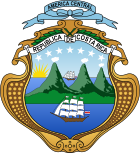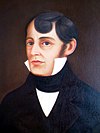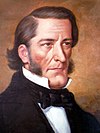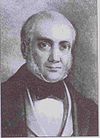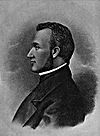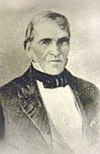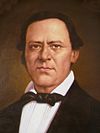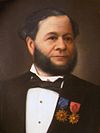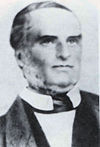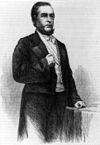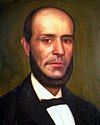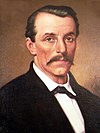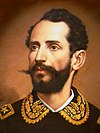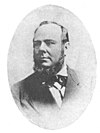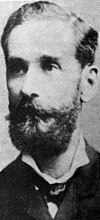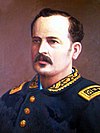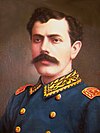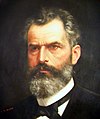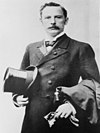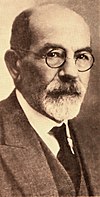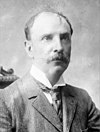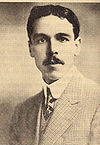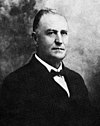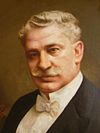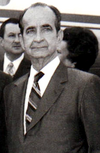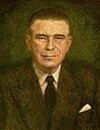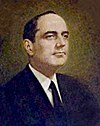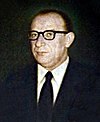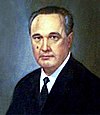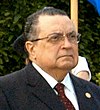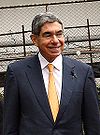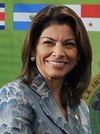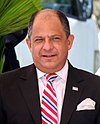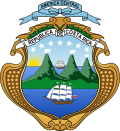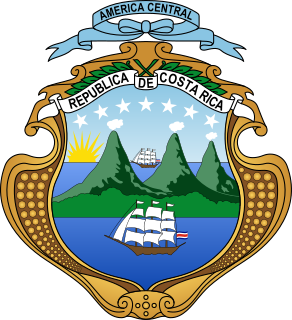
The politics of Costa Rica take place in a framework of a presidential, representative democratic republic, with a multi-party system. Executive power is exercised by the president and his cabinet, and the President of Costa Rica is both the head of state and head of government. Legislative power is vested in the Legislative Assembly. The president and 57 Legislative Assembly deputies are elected for four-year terms. The judiciary operates independent of the executive and the legislature but remains involved in the political process. Costa Rica is a republic with a strong system of constitutional checks and balances. Voting is compulsory in Costa Rica but it is not enforced.

The Libertarian Movement Party is a political party based on classical liberalism in Costa Rica. It was founded in May 1994. After an important protagonism during early 2000s with its perennial nominee Otto Guevara among the main candidates and reaching third place in 2006 and 2010, it was affected by several corruption scandals and lack of funds, the party gradually suffered a debacle in 2014 ending in fourth on the presidential ticket, and fifth in Parliament. Later losing all its mayors in the mid-term local election of 2016, to finally having its worst results in 2018 with Guevara's candidacy reaching only 1% of support and losing all seats in Congress.

The history of Central America is the study of the region known as Central America.

The Federal Republic of Central America, also called the United Provinces of Central America in its first year of creation, was a sovereign state in Central America consisting of the territories of the former Captaincy General of Guatemala of New Spain. It existed from 1823 to 1841, and was a republican democracy.

Francisco Morazán was a Central American politician who was president of the Federal Republic of Central America from 1830 to 1839. Before he was president of Central America he was the head of state of Honduras. He rose to prominence at the battle of La Trinidad on November 11, 1827. Morazán then dominated the political and military scene of Central America until his execution in 1842.

José Santos Zelaya López was the President of Nicaragua from 25 July 1893 to 21 December 1909.

The Legislative Assembly is the unicameral legislative branch of the government of Costa Rica. The national congress building is located in the city capital, San José, specifically in El Carmen District in San José Canton.

Lesbian, gay, bisexual, and transgender (LGBT) rights in Costa Rica have evolved significantly in the past decades. Same-sex sexual relations have been legal since 1971. Since 2013, households headed by a same-sex couples can obtain some domestic partnership benefits. In January 2018, the Inter-American Court of Human Rights made mandatory the approbation of same-sex marriage, adoption for same-sex couples and the recognition of transgender people's gender identity on ID cards. The Government announced that it would apply the rulings in the following months.

Carlos Salazar Castro was a Central American military officer and Liberal politician. Briefly in 1834 he was provisional president of El Salvador, and in 1839 he was provisional president of Guatemala.

Christianity is the largest religion in Costa Rica, with Roman Catholics having the most adherents. Roman Catholicism is the state religion, and the government generally upholds people's religious freedom in practice.

Laura Chinchilla Miranda is a Costa Rican politician who was President of Costa Rica from 2010 to 2014. She was one of Óscar Arias Sánchez's two Vice-Presidents and his administration's Minister of Justice. She was the governing PLN candidate for President in the 2010 general election, where she won with 46.76% of the vote on 7 February. She was the eighth woman president of a Latin American country and the first woman to become President of Costa Rica. She was sworn in as President of Costa Rica on May 8, 2010.

Lorenzo Montúfar y Rivera was a Guatemalan politician and lawyer. Superb leader and speaker, helped the liberal regime of Justo Rufino Barrios, served in the Guatemalan legislature, taught in the College of Law of the Universidad Nacional de Guatemala and, towards the end of his life, was a presidential candidate himself losing to general José María Reyna Barrios. He was also Foreign Secretary of Costa Rica in 1856 and from 1870 to 1873, and President of University of Saint Thomas, also in Costa Rica.

The 1889 Costa Rican general election was held between 7 October 1889 and 1 December 1889. It was particularly notorious for been the first time in Costa Rica's history that political parties took part in an election. The date of November 7 is still commemorated in Costa Rica as "Democracy's Day" due to the outcome of the liberal government accepting the results of the conservative opposition, as to that point, authoritarian governments were the norm.
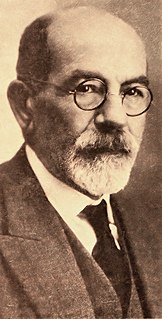
The 1906 Costa Rican general election was held during the presidency of Ascensión Esquivel Ibarra. Ibarra openly supported candidate Cleto González Víquez. Other candidates were former president Bernardo Soto Alfaro, former State and Police Secretary Tobías Zúñiga Castro, the also former State Secretary Máximo Fernández Alvarado and former justice and Foreign Secretary Ezequiel Gutiérrez Iglesias. Difference were more personal than ideological as all candidates except Gutiérrez were liberals, and the election had a strong "anti-cletista" component. This "anti-cletismo" was what united the opposition and talks about a common joint front occurred but it was not applied. Gutiérrez was candidate of the conservative "Democratic Union", the party that emerged from the now outlawed Catholic Union.

The First Costa Rican Republic is the name given to the historical period between the proclamation of the Republic of Costa Rica in the 1848 reformed Constitution and the official decree by then President José María Castro Madriz on 31 August 1848 and the Costa Rican Civil War of 1948 which ended with the enactment of the current 1949 Constitution on 7 November 1949 starting the Second Costa Rican Republic.

Liberalism in Costa Rica is a political philosophy with a long and complex history. Liberals were the hegemonic political group for most of Costa Rica’s history especially during the periods of the Free State and the First Republic, however, as the liberal model exhausted itself and new more left-wing reformist movements clashed during the Costa Rican Civil War liberalism was relegated to a secondary role after the Second Costa Rican Republic with the development of Costa Rica’s Welfare State and its two-party system controlled by social-democratic and Christian democratic parties.

The Reform State or Reformist State is a period in Costa Rican history characterized by the change in political and economic paradigm switching from the uncontrolled capitalism and laissez faire of the Liberal State into a more economically progressive Welfare State. The period ranges from approximately 1940 starting with the presidency of social reformer Rafael Angel Calderón Guardia and ends around the 1980s with the first neoliberal and Washington Consensus reforms that began after the government of Luis Alberto Monge.
